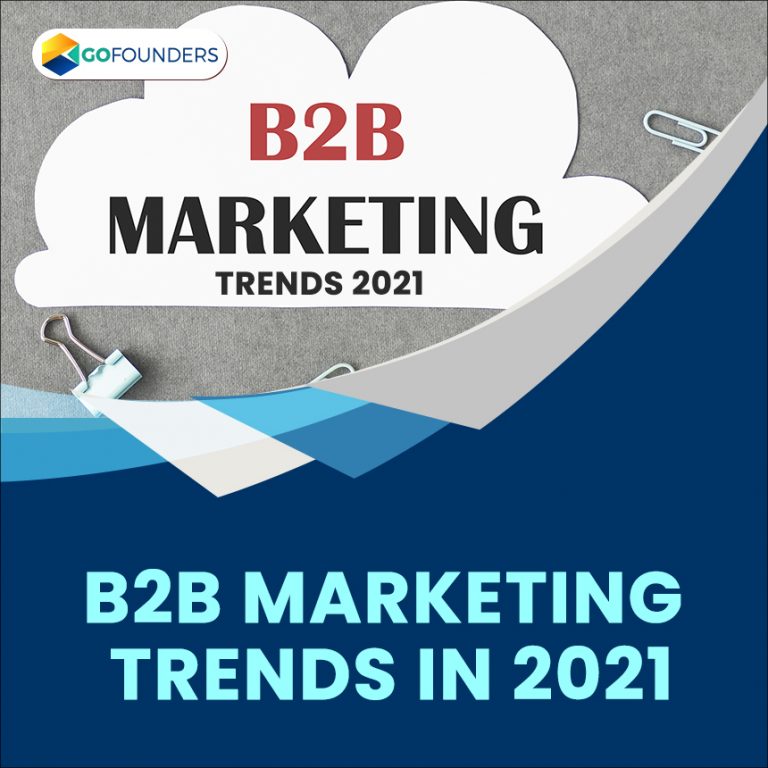
The year 2020 going to end, and 2021 is coming ahead. Now, it’s time to look at B2B marketing trends in 2021. Based on the previous year’s pattern, we can see the ongoing evolution of many B2B marketing trends and B2C marketing influence makes a significant impact. Here are the top B2B marketing trends in 2021 that you should know defiantly.
Top B2B marketing trends in 2021:
- Digital Acceleration:
There is a massive demand for digital and digital consumption in 2020. But, the need for digital is not new. It’s been there for years in the workforce, and the rapid changes have bought on by technological advancement.
And now, 2021 will see the majority of B2B organizations. Digital acceleration may look like video content, virtual events, and SEO & SEM. Let’s see each type in detail.
- Video content:
Online videos may gain more than 82% of all consumer internet traffic by the year 2022. And most of the B2B buyers looking to have video content at every stage of their journey. Some examples where B2B buyers should invest are product or service demos, tutorials and client success stories.
- Virtual events:
Virtual events have become more critical with the sudden and dramatic halt to face to face engagement. A format with broadcast quality is coming in the year 2021 based on the expectations of virtual events to become more hybrid in nature.
- SEO & SEM:
Most of the marketers are active in search engine optimization. B2B marketers are investing more in search engines due to an increase in digital consumption. The growth continued, and change is on search intent voice search. Expected to have half of the examinations will be through voice query by 2021.
2. The increasing importance of AI:
The importance of AI is increasing hugely and will have a massive impact on our lives. There will be one person out of five who uses AI for marketing and sales purposes in marketing. According to the research, Most of the B2B marketers are planning to implement AI for the year 2021.AI powered marketing trends are below, look at them.
- Analysis of client insights:
AI helps to analyze the unstructured data like images, videos, and audios. For example, you can explore the recorded sales calls to know how to change messaging, better service to customers, and increase workforce productivity.
- Determine buyer intent data:
Buyer intent data used to find out the customers who are currently in a market seeking for your solutions. The information comes by searching through specific keywords or visiting yours or competitors websites. Marketing campaigns are customized with the help of this information and help to engage with customers more effectively.
3. Responsive marketing:
Marketers are considering the benefits of agile marketing in the year 2020. Agile marketing has 80% of ongoing market optimization. Predicted to have more than 85% of marketers to use agile marketing for the next two years. Impact on B2B marketing due to agile marketing are listed below.
- Customers approach directly:
Most of the consumers stated that they care more about their customers’ satisfaction to decide from what company to buy the products or services. Hence, customer experience is more important. Marketers may think and make the customers an integral influence to plan, process, products, and services, marketing and sales activities. It makes marketing from the inside-out approach to the outside-in practice.
- Experimenting:
Market demands agility from organizations to continue thriving regardless of hard times. It can be done by reacting fast to customer needs and making sudden operational and market changes. B2B marketers need not fear if they have agile thinking nature and can achieve growth and success.
- ABM (Account-Based Marketing) trends:
ABM helps to transform customer success, sales, and marketing teams to full-fledged revenue generators. Still, 8% of organizations are in ABM pilot mode in 2020 where there is 43% in early stages on implementation. ABM become a most powerful strategy in 2021 to lead B2B companies. Below are the ABM trends.
- Generate revenue, not leads:
Covid-19 bought many changes in marketing results in shifting from generating leads to generating revenue. As there is no sufficient budget, the company revenue focus has shifted to customer-oriented programs to protect existing revenue budget.
- Customer retention:
Companies gained 36% higher customer retention rates and 38% higher sales by aligning sales and marketing teams through ABM. ABM drives more customer retention, and it’s not just for customer acquisition. Marketers know that more budget and effort required to acquire a new customer than to retain an existing one. ABM strategies engage with existing customers with personalized outreach along their journey.
- Integrating Sales and Marketing:
ABM makes sales and marketing to be integrated rather than just aligning. The ABM strategies need internal sales and marketing teams to incorporate while working on ABM initiatives together.
Conclusion:
These are the top B2B marketing trends in 2021. 2020 has given good experience in marketing to know what to do next to achieve success and growth. Hence ABM strategies are more powerful to engage with customers and to achieve success throughout your journey.



Mario Sousa
3 years ago